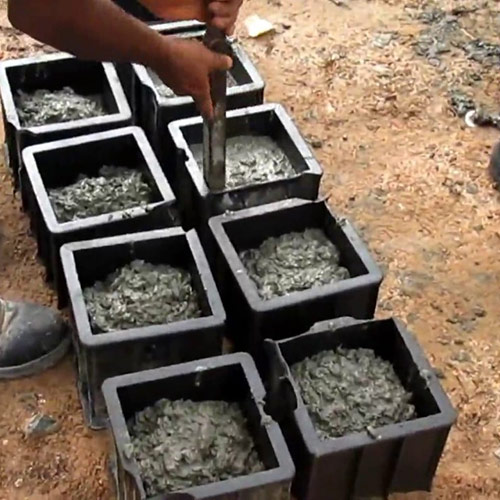Cube Test Procedure in Civil Engineering

In civil engineering, the cube test is a vital procedure used to determine the compressive strength of concrete. This test is crucial in ensuring the quality and durability of concrete structures. Understanding the cube test procedure is essential for all civil engineers and construction professionals. In this article, we will discuss the step-by-step process of conducting a cube test in civil engineering.
What is the Cube Test Procedure in Civil Engineering?
The cube test procedure involves casting and testing concrete cubes to determine their compressive strength. This test is conducted by placing cylindrical molds filled with fresh concrete in a curing tank for a specified period. After the curing period, the cubes are removed from the molds and tested using a compression testing machine. The compressive strength of the cubes is calculated by dividing the maximum load applied to the cube by the cross-sectional area.
How to Conduct a Cube Test:
- Preparation of Test Specimens
- Prepare the molds for casting concrete cubes.
- Ensure that the molds are clean and lubricated to prevent the cubes from sticking.
- Fill the molds with fresh concrete in three layers, compacting each layer thoroughly.
- Curing of Concrete Cubes
- After casting, cover the molds with a damp cloth to prevent moisture loss.
- Cure the cubes in a curing tank at a temperature of 27 ± 2°C for 28 days.
- Ensure that the cubes are not subjected to any external loading during the curing period.
- Testing of Concrete Cubes
- Remove the cubes from the molds after the curing period.
- Wipe off any excess water from the surface of the cubes.
- Place the cube in the compression testing machine and apply a gradually increasing load until the cube fails.
- Calculation of Compressive Strength
- Measure the dimensions of the cube to calculate the cross-sectional area.
- Record the maximum load applied to the cube at failure.
- Calculate the compressive strength of the cube using the formula: Compressive Strength = Maximum Load/Area
Significance of Cube Testing in Civil Engineering:
The cube test procedure is essential for assessing the quality of concrete used in construction projects. By determining the compressive strength of concrete cubes, engineers can ensure that the concrete meets the required standards and specifications. This test helps in identifying any potential issues with the concrete mixture or curing process, allowing for corrective measures to be taken before the construction phase.
The cube test procedure is a critical aspect of quality control in civil engineering. By following the correct procedures for casting, curing, and testing concrete cubes, engineers can obtain accurate information about the compressive strength of the concrete. Conducting cube tests regularly during construction projects is essential for ensuring the structural integrity and durability of concrete structures. Understanding the cube test procedure is essential for all civil engineers involved in the construction industry.
